
Overview
This article presents crucial conversion rate optimization (CRO) statistics that every direct-to-consumer (DTC) brand owner must understand to achieve success. Leveraging data-driven strategies is not just beneficial; it’s essential. Personalized marketing and enhancements to user experience have proven to significantly increase engagement, conversion rates, and overall profitability for DTC companies.
Understanding the impact of these strategies is vital. For instance, brands that implement personalized marketing see a notable rise in customer engagement. This isn’t merely anecdotal; studies show that tailored experiences can lead to conversion rate increases of up to 20%. Such data underscores the importance of adopting a customer-centric approach.
Moreover, enhancing user experience is equally critical. A seamless, intuitive interface can make all the difference in retaining customers and driving sales. Research indicates that companies prioritizing user experience see a 400% increase in conversion rates. This statistic highlights the undeniable link between user satisfaction and business success.
In conclusion, DTC brand owners must prioritize these data-driven strategies. By focusing on personalized marketing and user experience enhancements, they can significantly boost engagement and profitability. The time to act is now—embrace these insights and transform your approach to CRO.
Introduction
The landscape of direct-to-consumer (DTC) brands is evolving rapidly, and conversion rate optimization (CRO) has emerged as a critical factor for success. As competition intensifies, understanding the nuances of CRO statistics is essential for brand owners aiming to enhance profitability and customer engagement. This article explores 19 pivotal CRO statistics that every DTC brand owner must know, revealing how data-driven strategies can transform marketing efforts and drive substantial growth.
What challenges do brands face in leveraging these insights? How can they effectively implement strategies to not only meet but exceed industry benchmarks? By addressing these questions, we will uncover actionable insights that empower DTC brands to thrive in a competitive marketplace.
Parah Group: Transforming DTC Brand Profitability Through Data-Driven CRO Strategies
Parah Group stands out as a leader in CRO statistics, specifically designed for direct-to-consumer (DTC) companies. By leveraging data-informed strategies and insights from consumer psychology, they empower brands to optimize their existing resources, enhancing profitability without incurring higher advertising costs. Their comprehensive approach encompasses:
- User session recordings
- Competitor analysis
- Continuous A/B testing
This ensures that every facet of a client's marketing strategy is meticulously aligned for maximum growth.
Recent case studies vividly demonstrate the success of Parah Group's CRO methodologies. For instance, a $30M clothing label experienced a remarkable 35% increase in engagement metrics and a 10% boost in revenue per visitor following the launch of a redesigned homepage that emphasized social validation and refined product pricing. In another example, Grab Green, a $15M cleaning product company, achieved an impressive 80% rise in average order value (AOV) by implementing bundles and multi-packs. Similarly, STRNG Seeds, a cannabis company, realized a staggering 90% improvement in AOV through targeted upselling and custom landing pages.
These outcomes highlight the effectiveness of Parah Group's strategies, which consistently deliver significant enhancements in ROI and conversion rates, as demonstrated by the CRO statistics. Industry experts emphasize that a well-rounded CRO strategy can yield an average ROI of 223%, which underscores the importance of CRO statistics in data-driven decision-making to enhance profitability for DTC companies. Parah Group has established itself as a trusted partner for businesses seeking sustainable growth in an increasingly competitive landscape.

Average Conversion Rate: 2.35% Across All Websites
According to cro statistics, the average transformation percentage across all websites stands at approximately 2.35%, which is a critical benchmark for DTC companies. This figure highlights that many businesses may be falling short, emphasizing the need for a thorough analysis of their performance metrics. By comparing their metrics against the cro statistics average, companies can identify specific areas ripe for improvement.
For instance, Parah Group has successfully helped a $30M clothing company enhance its sales performance by 35% through strategic homepage redesigns, optimized pricing strategies, and gamified progress bars for free shipping thresholds. In a similar vein, a $15M cleaning product line experienced an impressive 80% increase in average order value (AOV) by implementing free shipping thresholds and bundling options. These case studies illustrate the significant impact that targeted modifications can have on transaction effectiveness.
Experts assert that surpassing this average necessitates a multifaceted approach, according to cro statistics. Enhancing user experience, optimizing product presentations, and streamlining the checkout process are all essential components. As Harpal Singh, a thought leader in performance marketing, aptly states, "A thriving DTC eCommerce business hinges on the ability to convert visitors into customers." By adopting effective optimization techniques, like those employed by Parah Group, DTC companies can not only exceed the 2.35% standard but also substantially boost their profitability and customer engagement.
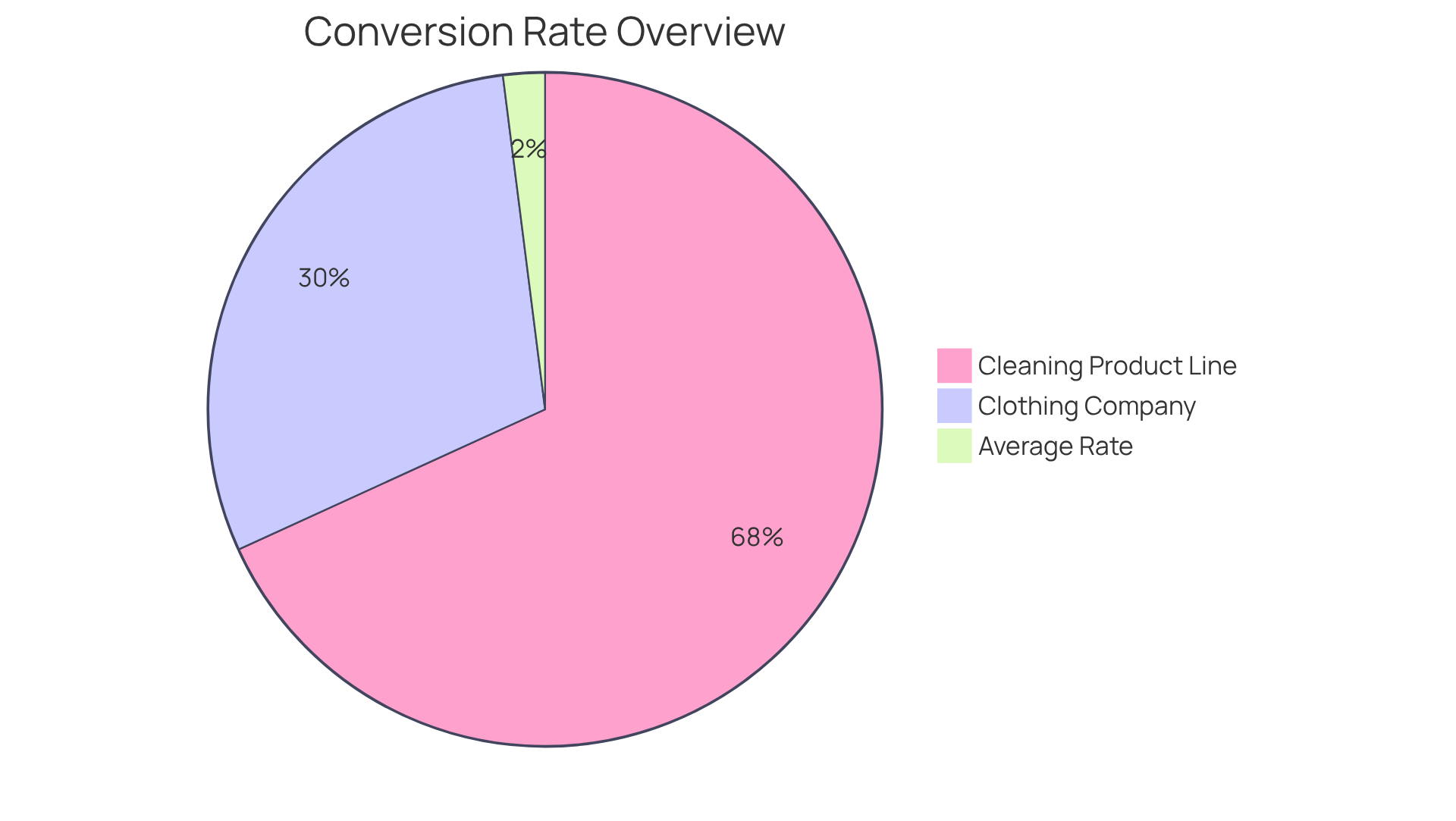
Catering & Restaurant Industry: Leading with an 18.2% Conversion Rate
The catering and dining sector boasts an impressive success rate of 18.2%. This figure underscores the effectiveness of their online ordering systems and user experience strategies. Engaging interfaces, streamlined purchasing processes, and targeted marketing efforts resonate deeply with consumers, driving this success.
Direct-to-consumer (DTC) companies can draw valuable lessons from these practices. By prioritizing user experience, simplifying purchasing routes, and executing targeted promotions, they can significantly enhance their sales performance. Implementing these proven techniques not only boosts sales but also leads to increased profitability and customer satisfaction.
In conclusion, DTC companies should take action now. Embrace these strategies to transform your sales approach and achieve remarkable results.

AI Utilization: 190% Increase in Marketing Efficiency Over Two Years
The integration of AI in marketing has resulted in an impressive 190% increase in efficiency over the past two years. Direct-to-consumer (DTC) companies can leverage AI for personalized marketing, predictive analytics, and customer segmentation, which enables them to create more targeted and effective campaigns. By employing AI-powered tools like Klaviyo for email marketing automation, companies can enhance their marketing initiatives, reduce costs, and ultimately improve their results.
Companies that utilize machine learning-based personalization report significant advancements in engagement metrics and increased customer loyalty. Research indicates that these strategies can boost customer retention by as much as 18%. As Md Sumsuzoha Saqib Luqman notes, "retailers utilizing ML for personalization can significantly enhance customer engagement metrics, boost loyalty, and ultimately increase conversion rates." This shift not only refines marketing strategies but also fosters deeper connections with consumers, driving higher profitability.
Parah Group's five-step process for profit-enhancing strategies in CRO statistics ensures that companies maximize their existing resources through high-velocity, rigorous testing. By aligning paid advertisements with landing pages, DTC companies can achieve substantial growth and improved performance metrics. However, it is crucial for companies to consider ethical governance in AI applications to ensure trust and transparency in their marketing practices.

Web Analytics Tools: 69% Adoption Rate Among Marketers
A striking 69% of marketers have adopted web analytics tools to monitor and analyze their performance, highlighting their critical role in the current digital landscape. These tools deliver essential insights into user behavior, traffic sources, and performance metrics, enabling DTC companies to refine their marketing strategies effectively. By prioritizing robust analytics solutions, businesses can achieve a comprehensive understanding of their audience, leading to data-driven decisions that significantly enhance success rates.
For example, companies utilizing real-time analytics have reported improvements in CRO statistics, with conversion rates ranging from 15% to 30%. This statistic underscores the tangible advantages of leveraging CRO statistics. As industry leaders assert, harnessing the power of analytics and understanding CRO statistics is vital for DTC companies striving to optimize their performance and foster sustainable growth.
Parah Group implements targeted CRO strategies, including:
- Rigorous testing
- Alignment of paid ads with landing pages
This ensures that analytics are seamlessly integrated into growth strategies to maximize profitability. Furthermore, monitoring data beyond Google Analytics is increasingly essential for DTC companies seeking deeper insights into customer behavior and enhancing their marketing effectiveness.
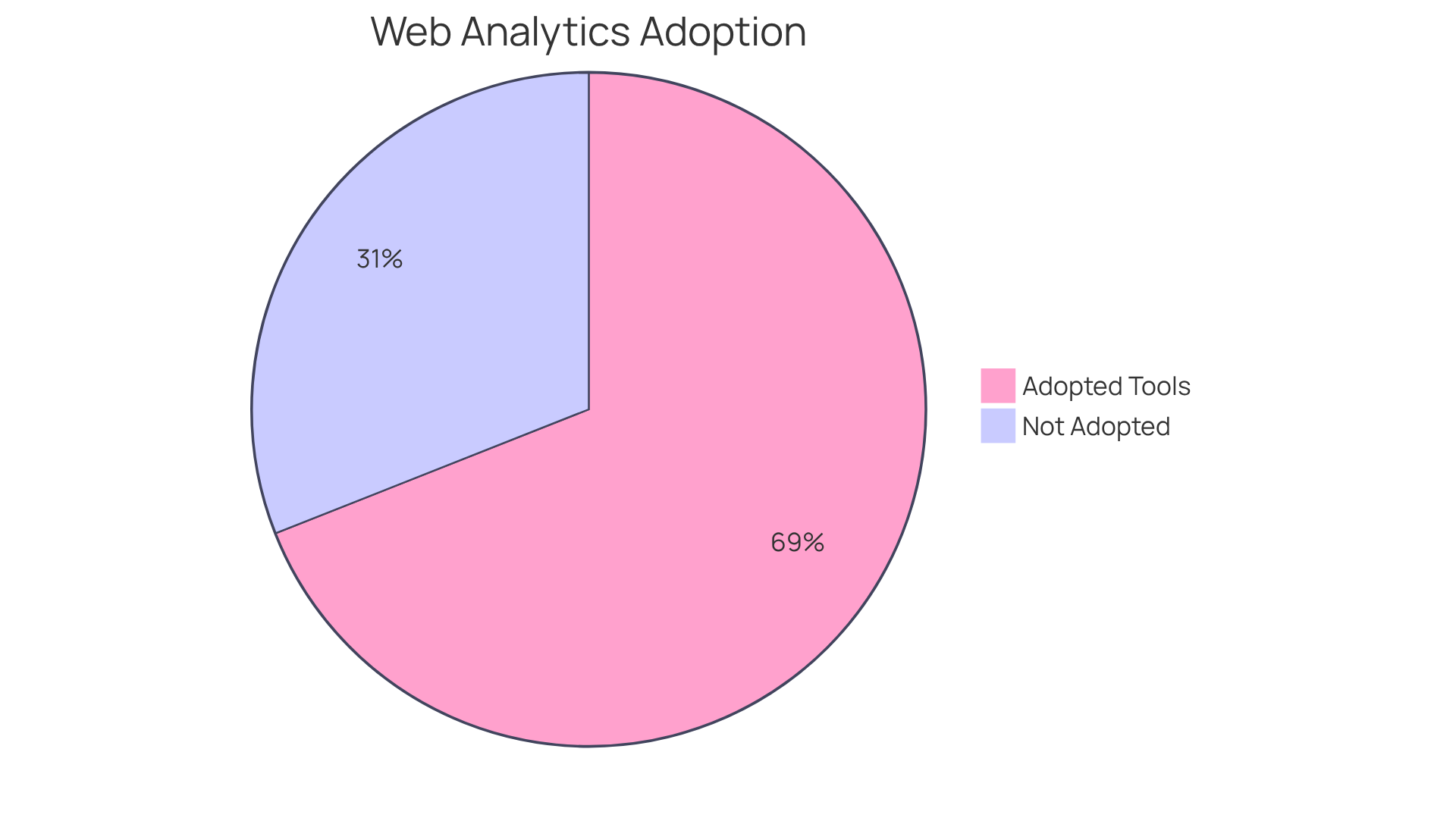
CRO Tools: Achieving an Average ROI of 223%
CRO tools deliver an impressive average ROI of 223%. This remarkable return on investment underscores the effectiveness of these tools in enhancing performance metrics and driving revenue growth. For DTC companies grappling with high traffic yet low sales and significant cart abandonment, investing in reputable CRO tools is not just beneficial—it's essential for optimizing website performance and maximizing marketing efforts.
Companies that have adopted these tools report substantial financial gains. For example:
- A $30M apparel company experienced a 10% increase in revenue per visitor and a 35% boost in conversion rates after implementing strategic changes.
- Grab Green, a $15M cleaning product company, achieved an 80% enhancement in average order value by refining their pricing strategies and introducing product bundles.
By leveraging the right CRO tools, DTC brands can significantly improve their profitability and gain a competitive edge in the market. The data speaks for itself: investing in CRO statistics is not merely an option; it’s a strategic imperative for companies aiming to thrive in today’s digital landscape.

Page Load Time: 0-4 Seconds for Optimal Conversion Rates
To achieve optimal results, e-commerce sites must target a page load time of just 0-4 seconds. Consider this: research shows that even a 1-second delay in load time can slash conversions by up to 20%. In contrast, pages that load in 1 second enjoy a conversion rate that is five times higher than those taking 10 seconds. For direct-to-consumer (DTC) companies, prioritizing website speed is non-negotiable. Slow-loading pages can lead to staggering bounce rates—up to 63% of shoppers abandon sites that take longer than 4 seconds to load.
So, how can brands enhance their page speed? Effective strategies include:
- Optimizing images
- Leveraging browser caching
- Minimizing server response times
By ensuring swift load times, brands can significantly elevate user experience, an essential component reflected in CRO statistics. This approach not only boosts success metrics but also aligns with Parah Group's rigorous testing practices and high-level expertise, ultimately driving sustainable growth and profitability.
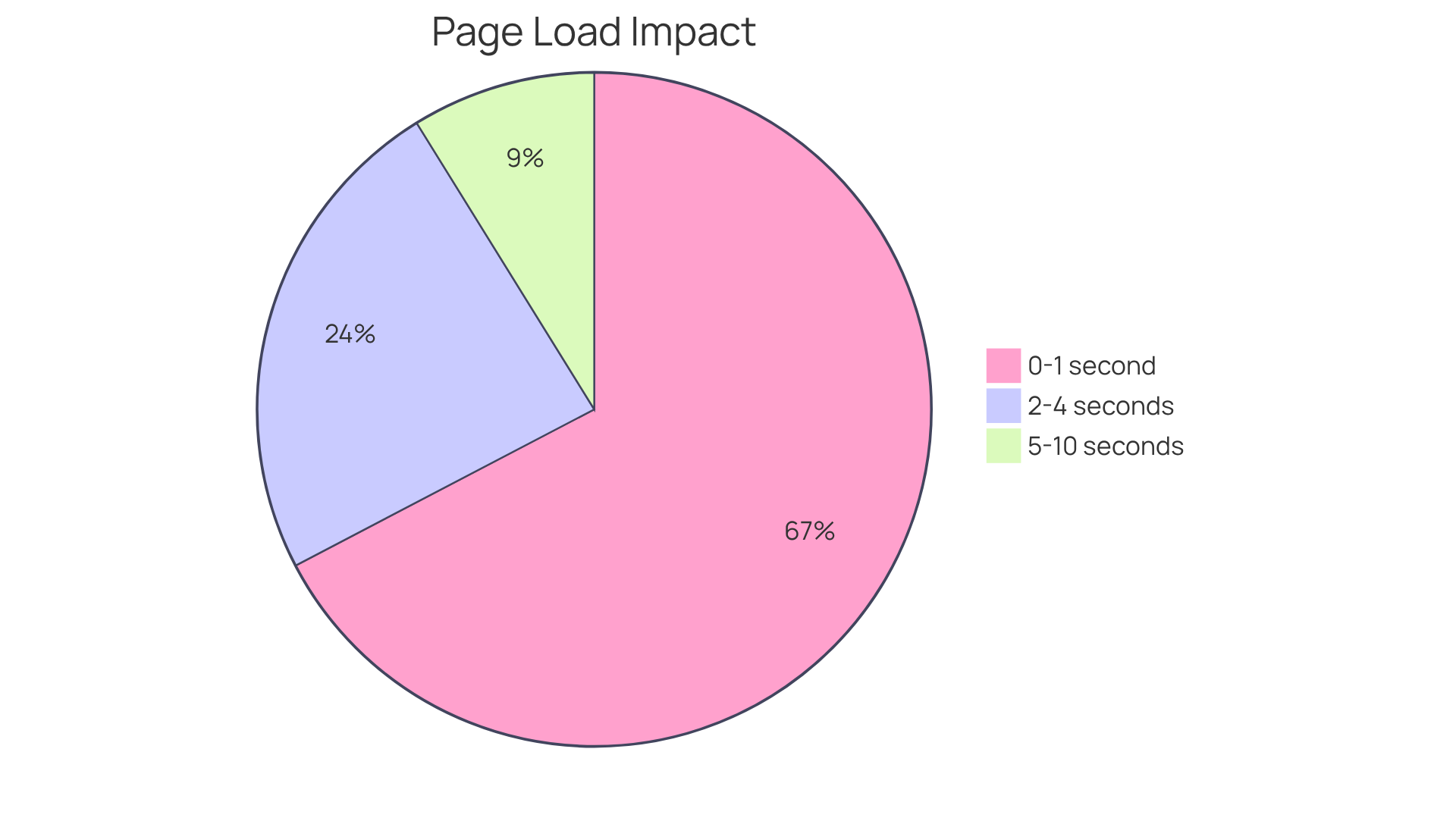
Personalized Calls-to-Action: 202% Higher Conversion Rates
Personalized calls-to-action (CTAs) can lead to an impressive 202% increase in conversion rates compared to generic options. This statistic underscores the critical need for DTC companies to tailor their marketing messages to resonate with individual users. By leveraging insights into user behavior, preferences, and demographics, companies can craft CTAs that are not only relevant but also compelling.
For instance, Parah Group's partnership with a $30M clothing label resulted in a 35% boost in performance metrics after implementing strategies like enhanced CTAs and reduced pop-ups. Similarly, a $15M cleaning product label experienced an 80% increase in average order value (AOV) through customized marketing tactics, including bundles and multi-packs. Such strategic personalization not only elevates user engagement but also drives significant improvements in sales metrics.
Marketing professionals assert that a well-executed personalization program can cultivate deeper connections with customers, ultimately fostering increased loyalty and higher average order values. By prioritizing tailored CTAs, DTC companies can effectively elevate their success rates and overall profitability.

Video Content: Boosting Conversion Rates by Up to 86%
Incorporating video material into marketing tactics can enhance success rates by as much as 86%. This compelling statistic underscores the effectiveness of videos in engaging users more than static content. For direct-to-consumer (DTC) companies, leveraging video marketing on websites and social media channels is essential for boosting user engagement and driving sales.
Consider the case of Zappos, which reported that product pages featuring videos experienced sales increases ranging from 6% to 30%. This illustrates the tangible benefits of integrating video into marketing strategies. Furthermore, a staggering 88% of consumers are convinced to purchase a product after watching a video, highlighting the persuasive power of visual storytelling.
Moreover, videos significantly enhance visitor retention on web pages. Individuals spend 1.4 times longer on pages that include video compared to those that do not, allowing promotional messages more time to resonate. By creating engaging video content, companies can dramatically improve their sales rates and overall performance.
Parah Group's case studies further demonstrate that incorporating video into a comprehensive strategy based on CRO statistics not only increases engagement but also aligns with established methodologies that drive revenue growth and enhance profitability for DTC companies. This strategic approach is not just beneficial; it is imperative for success in today's competitive market.
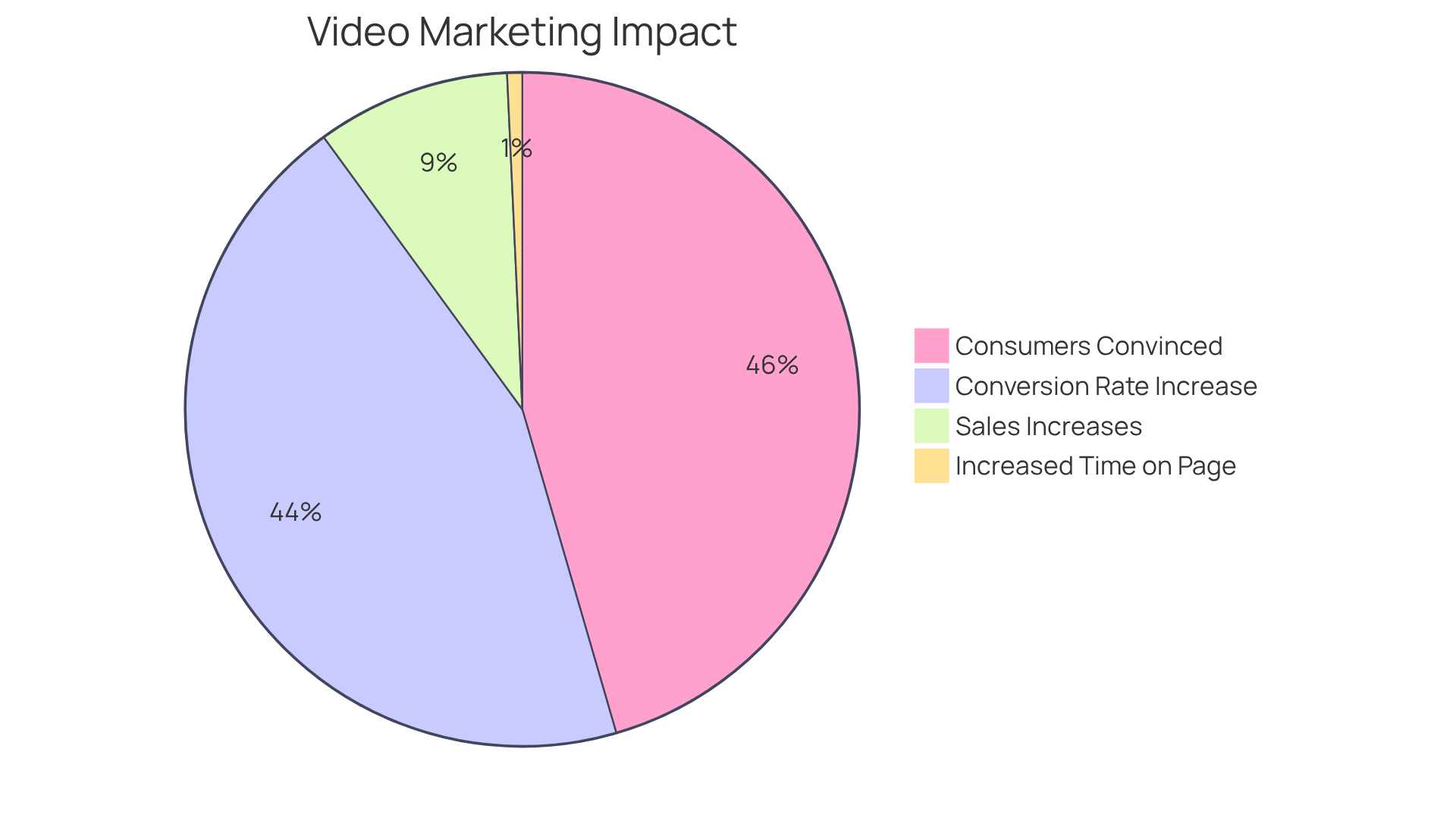
Mobile Online Conversions: Averaging 3.5% Across Platforms
Mobile online transactions average around 3.5% across various platforms, highlighting a significant opportunity for growth. As mobile usage continues to rise, direct-to-consumer (DTC) companies must prioritize mobile optimization to effectively engage this expanding audience. This involves ensuring responsive design, fast load times, and streamlined checkout processes. By concentrating on the mobile user experience, companies can not only improve their sales figures but also connect with the burgeoning mobile market.
Parah Group's comprehensive strategies for conversion rate optimization (CRO) highlight the importance of CRO statistics in aligning mobile optimization with overall growth objectives. Through rigorous testing and the application of consumer psychology—such as leveraging social proof and refining product pricing—companies can significantly enhance their mobile sales outcomes. For instance, one of our clients saw a remarkable 35% increase in performance metrics after enhancing their mobile site. This case illustrates the potential for revenue expansion and increased profitability when mobile optimization is executed effectively.

A/B Testing: Essential for Continuous Conversion Rate Improvement
A/B testing stands as a pivotal strategy for DTC companies aiming to elevate their sales performance. By systematically comparing two versions of a webpage or marketing asset, businesses can identify which elements resonate more effectively with their audience. This consistent application of A/B testing not only refines approaches but also enhances user experiences, ultimately driving higher conversion rates, as shown by CRO statistics.
This data-driven methodology empowers companies to make informed decisions, leading to measurable improvements in performance. Take, for instance, the Parah Group, which has successfully boosted DTC product profitability through innovative strategies based on CRO statistics. Case studies reveal that companies implementing these methods, as indicated by CRO statistics, have seen substantial revenue growth. One clothing label, for example, reported a remarkable 35% increase in customer engagement after strategically refining product pricing and amplifying social proof on their homepage.
Experts underscore that a well-structured A/B testing process does more than identify effective strategies; it also reveals the underlying reasons for their success, fostering smarter decision-making. As Ken Zhou, COO, aptly puts it, "Driving traffic without optimizing your site is like pouring water into a leaky bucket."
To maximize the impact of A/B testing efforts, companies should adhere to best practices:
- Isolate one variable per test
- Ensure sufficient traffic volume
- Time tests to avoid peak periods
By following these guidelines, businesses can drive significant enhancements in success metrics and overall profitability.
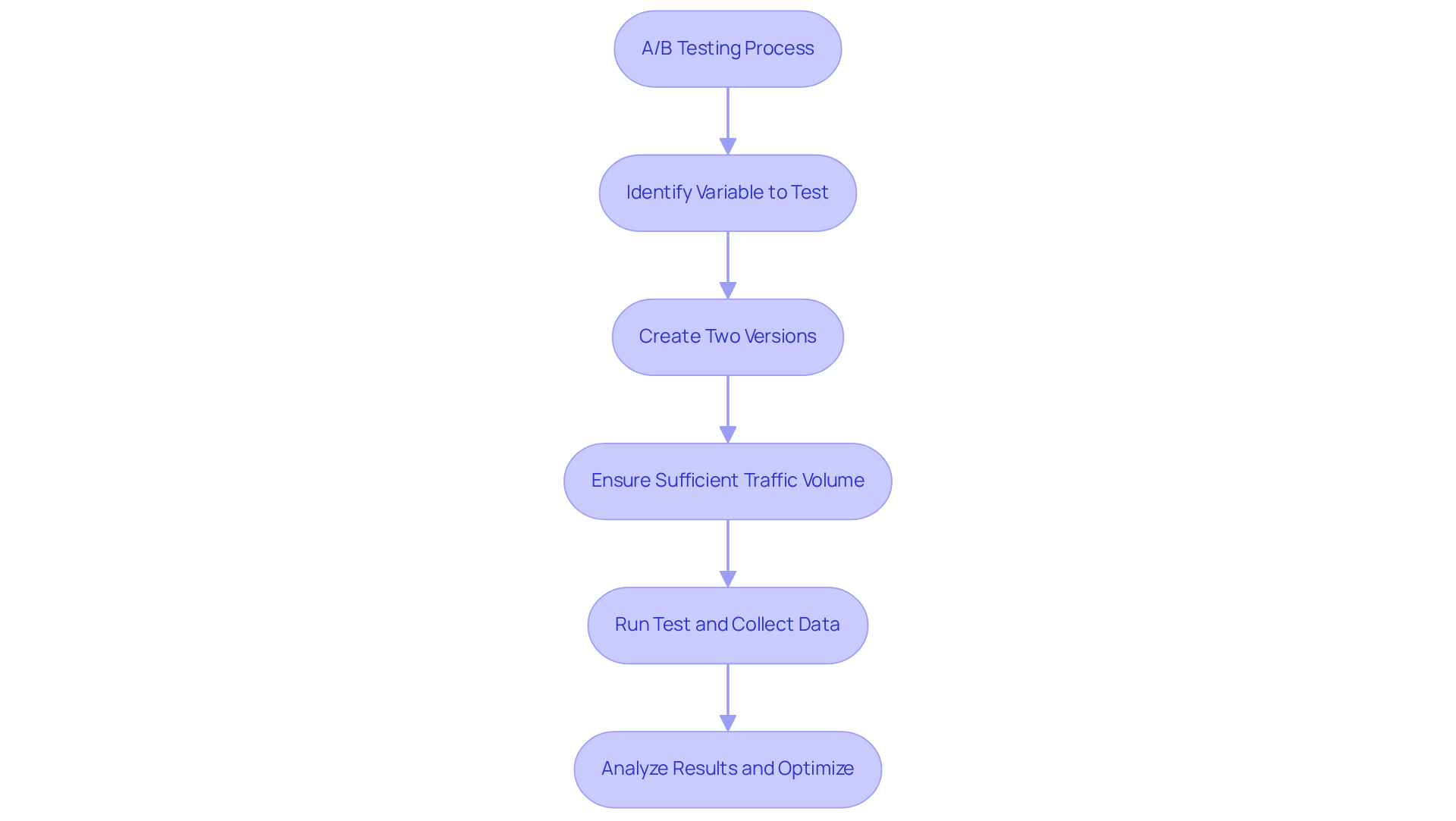
Legacy Technology: 25% of Companies Cite It as a Barrier to Conversion
Approximately 25% of businesses identify outdated technology as a significant barrier to improving their success metrics. Such systems not only hinder performance but also slow down processes and create friction in the user experience.
DTC companies must take a hard look at their technology stack. Upgrading to modern solutions can significantly enhance efficiency and user experience. By addressing these technological challenges head-on, companies can boost their success rates and overall performance.
Investing in contemporary technology is not just a choice; it’s a necessity for staying competitive in today’s market. Don't let outdated systems hold your business back. Evaluate your options and make the leap towards a more efficient future.
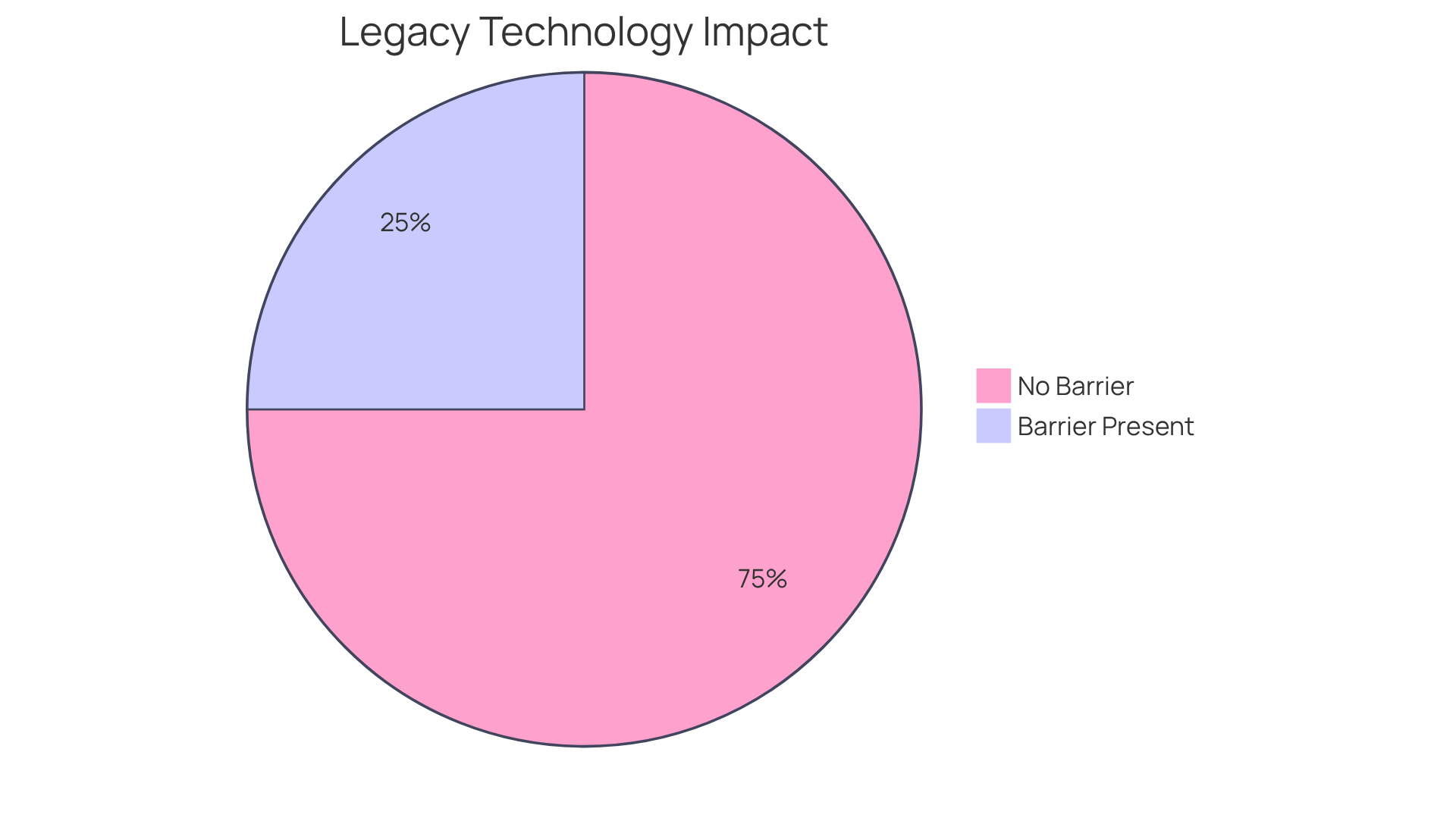
Customer Feedback: Key to Enhancing Conversion Strategies
Customer feedback serves as a cornerstone for enhancing strategies in direct-to-consumer (DTC) businesses. By actively seeking and analyzing feedback, companies can uncover user preferences, pinpoint pain points, and identify opportunities for improvement. For instance, Parah Group's partnership with a $30M clothing label led to a remarkable 35% increase in performance metrics by redesigning the homepage to highlight social proof and reviews. This showcases how customer insights can significantly drive revenue growth.
Marketing experts emphasize that effectively utilizing feedback can lead to substantial improvements in success rates. Industry specialists assert that companies prioritizing feedback systems—such as surveys, reviews, and social media interactions—can cultivate a more satisfying user experience. This proactive strategy not only builds trust but also boosts conversion rates, with 85% of consumers trusting online reviews as much as personal recommendations. Moreover, 68% of consumers place greater trust in reviews when both positive and negative ratings are present, underscoring the necessity of a balanced perspective in customer feedback.
To elevate performance, DTC companies should implement structured feedback collection methods, such as leveraging post-purchase emails to request reviews. This ensures that insights are integrated into their ongoing improvement efforts. Additionally, incorporating visuals in customer reviews can enhance engagement and aid customers in making informed purchasing decisions. By positioning feedback as a central element of their strategy, companies can improve overall performance and achieve sustainable growth.
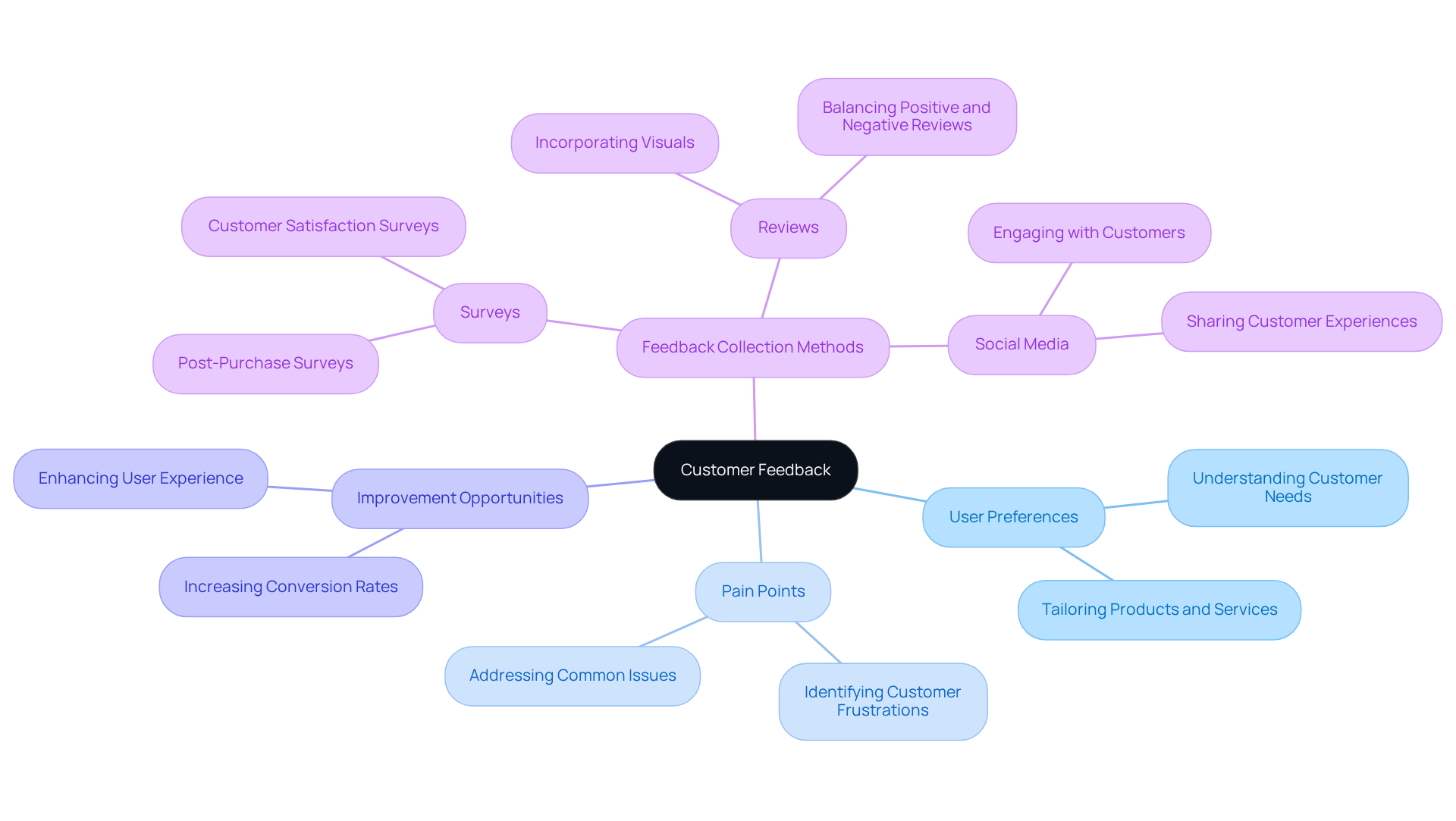
Optimization Software: Leading to a 30% Average Conversion Lift
Investing in optimization software is not just beneficial; it can yield an impressive average uplift of 30%. This makes it an essential resource for direct-to-consumer (DTC) companies. These powerful tools allow businesses to analyze user behavior, conduct A/B testing, and implement strategic changes that significantly enhance user experience.
Consider the Parah Group's collaboration with a $30M clothing label. They redesigned the homepage to emphasize social proof and introduced post-purchase upsells, resulting in a remarkable 35% boost in purchase success and a 10% increase in revenue per visitor. Similarly, Grab Green, a $15M cleaning product label, achieved an astounding 80% increase in average order value (AOV) by testing free shipping thresholds and introducing bundles.
Moreover, efficient optimization programs do more than just enhance user actions; they foster a deeper understanding of user interactions, ultimately maximizing growth potential. By leveraging these technologies and focusing on specific strategies—such as gamified progress bars and mobile optimization—DTC companies can achieve significant improvements in success rates, thereby boosting profitability and long-term success.
To fully harness the benefits of optimization software, DTC companies must regularly analyze user feedback and adjust their strategies accordingly. This proactive approach not only enhances user experience but also solidifies the company's position in a competitive market.

Personalized Emails: Leading to a 10% Increase in Conversions
Personalized emails can elevate conversions by as much as 10%. By tailoring email content to align with individual preferences and behaviors, DTC companies can significantly enhance engagement and drive sales. Efficient segmentation techniques are crucial; they empower companies to customize their messaging for specific audience segments, ensuring that campaigns resonate deeply with recipients. This targeted approach not only boosts success rates but also cultivates customer loyalty and satisfaction.
As David Newman aptly states, email marketing revolves around connecting with the right people at the right time for the right reason. Furthermore, Neil Patel underscores that effective segmentation is vital for successful email marketing. Engaged subscribers tend to spend 66% more than average customers, highlighting the financial advantages of personalization in nurturing meaningful customer relationships.
Parah Group's case studies illustrate how customized strategies, including personalized email campaigns, have led to significant increases in sales performance and average order values for brands. For instance, one case study revealed a remarkable 35% rise in transformation levels and a 93% increase in homepage scroll depth, showcasing the effectiveness of these strategies.
In conclusion, embracing personalized email marketing not only drives conversions but also fosters lasting customer connections. Companies should prioritize segmentation and customization to maximize their marketing efforts and achieve substantial growth.

Consumer Products: Achieving a 55% Close Rate
Consumer products boast an impressive closing percentage of 55%. This figure underscores the effectiveness of strategic sales approaches, robust branding, and active customer engagement. DTC companies must critically evaluate their sales methods and adopt practices that enhance outcomes.
For instance, Parah Group's collaboration with a $30M clothing brand resulted in a remarkable 35% increase in engagement, achieved through homepage redesigns that emphasized social proof and refined pricing strategies. This case highlights the importance of prioritizing relationship-building with customers and delivering exceptional value as essential tactics for improving closing percentages and overall sales performance.
As sales expert Patricia Fripp aptly states, "It’s not your customer’s job to remember you. It is your obligation and responsibility to make sure they don’t have the chance to forget you." This quote reinforces the necessity of a customer-centric approach. Moreover, focusing on quality interactions rather than quantity can lead to deeper connections and higher success rates, aligning with the views of industry leaders who advocate for trust-building as a cornerstone of effective sales.
It's crucial to recognize that sales success is 80% attitude and 20% aptitude, emphasizing the role of a positive mindset in driving conversions. Parah Group's strategies, such as implementing post-purchase upsells and gamifying the shopping experience, have demonstrated their ability to enhance profitability and customer engagement. These practices illustrate the significant impact of effective CRO statistics on Conversion Rate Optimization strategies.
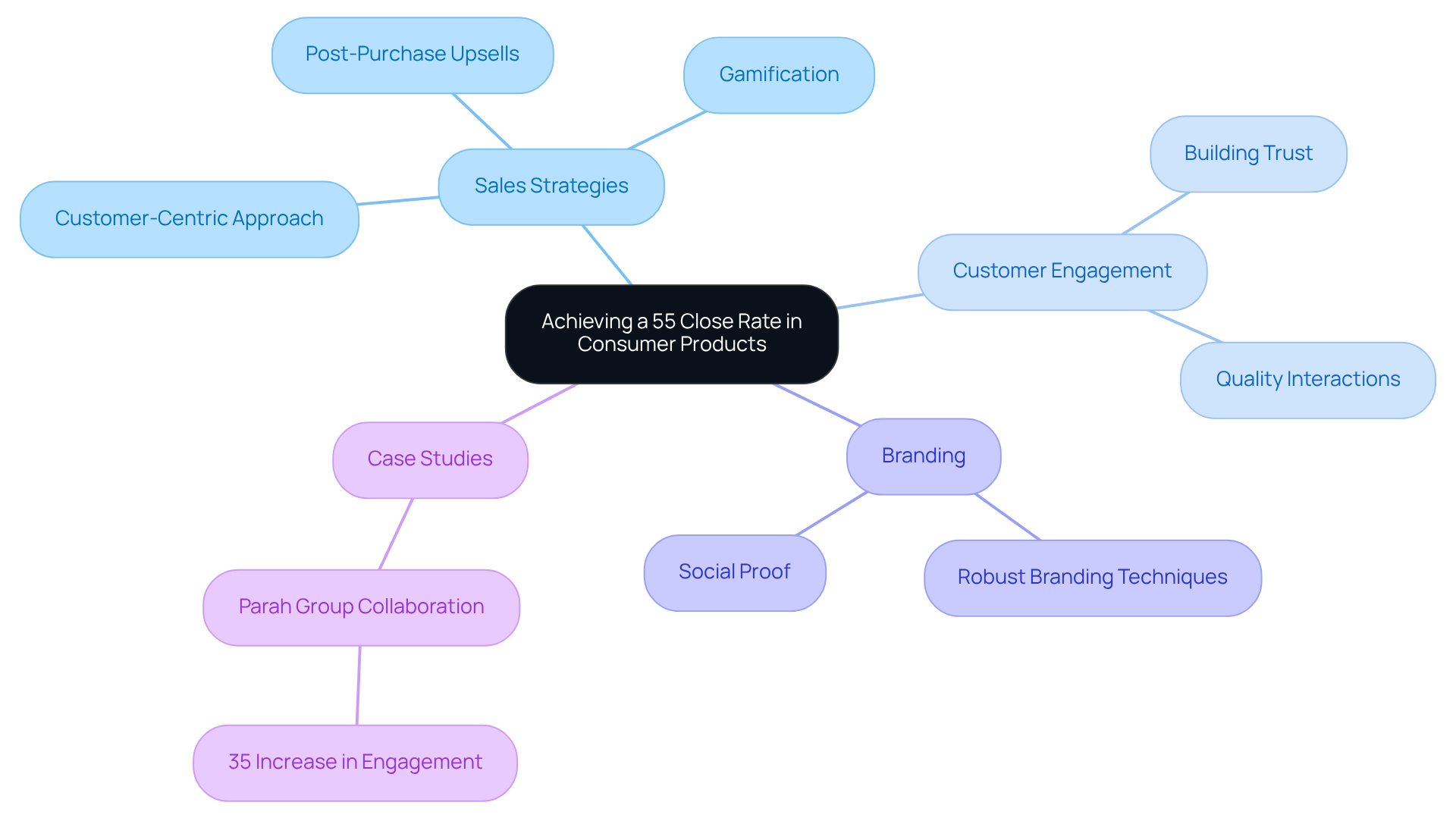
Single CTA Emails: Increasing Sales by Up to 1,617%
Emails featuring a single call-to-action (CTA) can boost sales by an astonishing 1,617%. This remarkable statistic underscores the necessity of clarity and focus in email marketing strategies. DTC companies must prioritize crafting emails that present one clear CTA, directing recipients toward a specific action. By reducing distractions and honing in on a singular objective, companies can significantly enhance their conversion rates.
Experts emphasize that effective CTAs should resonate with the audience's needs and preferences. For instance, personalized subject lines can enhance email opens by 26%, making it crucial to tailor messaging to individual subscribers. Successful brands like Peloton have adopted targeted email approaches, such as their 'Month in Review' campaign, which not only tracks user progress but also encourages engagement through community-driven content.
Moreover, Buzzfeed's approach to automated customer journeys exemplifies how targeted content can enhance user experience and drive traffic. By allowing subscribers to self-segment into specific newsletters, Buzzfeed has improved engagement and retention, reducing the likelihood of unsubscribes. This strategy emphasizes the significance of clarity and focus in email marketing, illustrating that a well-crafted single CTA can lead to considerable growth in sales and customer loyalty.
Parah Group's case studies further illustrate the effectiveness of focused strategies. For example, a $30M apparel company saw a 35% increase in conversion rates after implementing optimized pricing and gamified shipping thresholds. Similarly, a $15M cleaning product brand achieved a 73% increase in average order value (AOV) by testing free shipping thresholds and bundling products. These results underscore the potential of targeted strategies in driving revenue growth as indicated by cro statistics.
As Herschell Gordon Lewis aptly states, "When you emphasize everything, you emphasize nothing," reinforcing the necessity of focusing on a single CTA to maximize effectiveness in email marketing.

Digital Experience Improvement: 76% of Marketers Agree It Impacts Conversions
A significant 76% of marketers agree that enhancing digital experiences directly impacts success rates. Direct-to-consumer (DTC) companies must prioritize their online presence by focusing on intuitive design, fast load times, and engaging content. By honing in on user experience, brands can craft a seamless journey that not only promotes transactions but also fosters customer loyalty.
Research indicates that mobile users, who represent over half of global web traffic, are especially sensitive to site performance; a staggering 53% will abandon a site that takes longer than three seconds to load. Thus, optimizing for speed and usability is essential. Additionally, incorporating trust indicators—such as customer reviews and security seals—can significantly enhance credibility and comfort for visitors, ultimately leading to greater success. In fact, showcasing ratings and reviews can increase sales by 38% for home appliances and electronics.
Parah Group's comprehensive approach to CRO statistics underscores the importance of these elements, having successfully transformed DTC enterprises through meticulous strategies focused on profitability and sustainable growth. With mobile traffic accounting for 70% of overall visits yet experiencing lower success rates, there exists a substantial opportunity for improvement in mobile-responsive design.
As Dinis Guarda aptly states, "You can double or triple your revenue without spending more on advertising—just by converting more of your existing traffic." DTC companies must adopt these strategies to elevate their digital experiences and drive success.

Personalized Sales Calls: Increasing Conversion by Over 200%
Tailored sales calls can boost success rates by over 200%. By customizing discussions to meet the unique needs and preferences of prospective clients, DTC companies can forge stronger relationships that significantly enhance the likelihood of closing deals.
Training sales teams to prioritize personalization during calls is essential. They must focus on addressing individual customer pain points and providing relevant solutions. This strategic approach not only elevates conversion rates but also propels overall sales success, positioning brands for sustainable growth in a competitive market.
Incorporating this level of personalization is not just beneficial; it’s imperative for thriving in today’s landscape. By investing in training that emphasizes these techniques, companies can ensure their sales teams are equipped to engage effectively and meaningfully with clients.
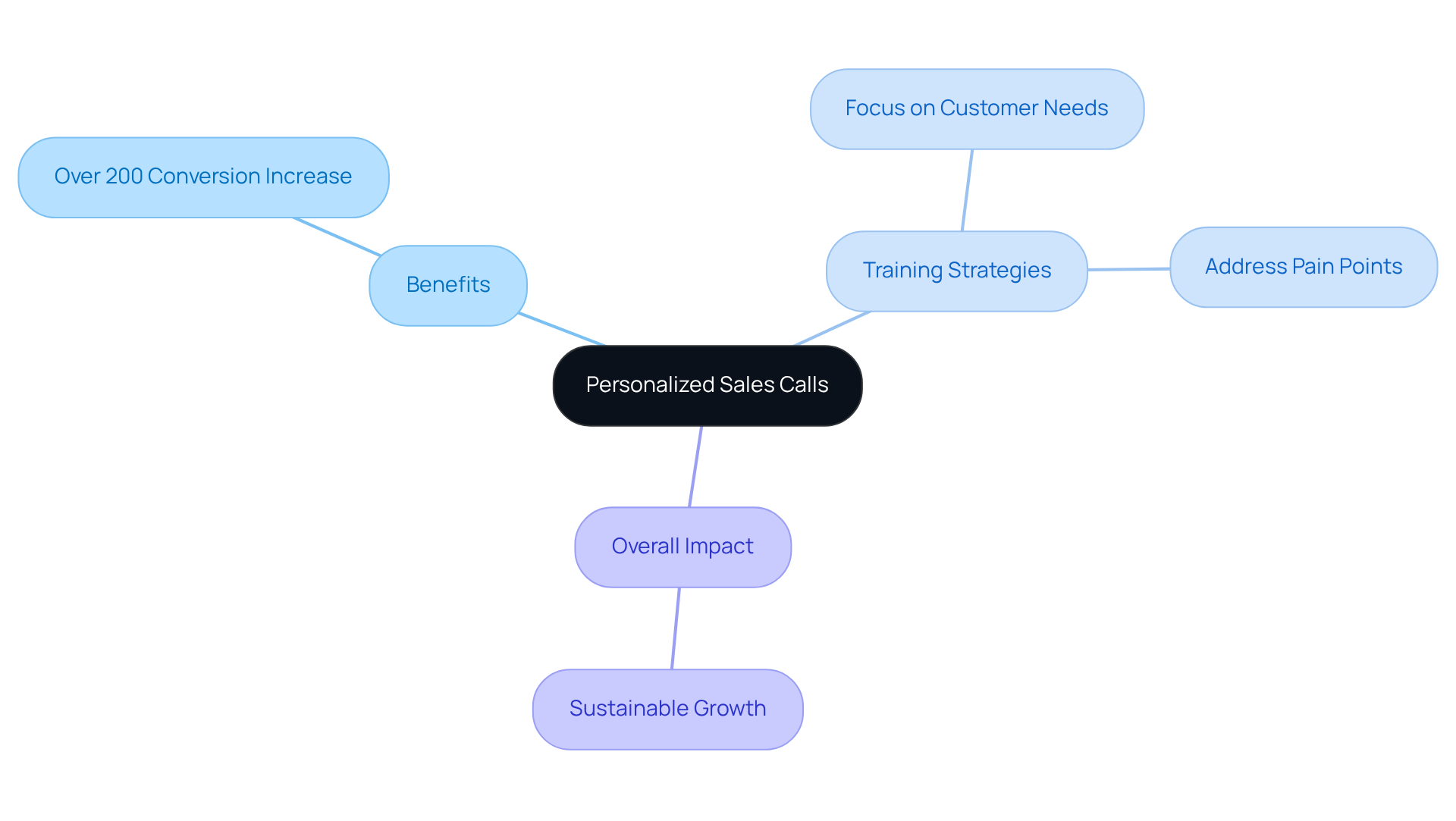
Conclusion
Highlighting the essential role of conversion rate optimization (CRO) strategies, the insights presented demonstrate how DTC brands can significantly boost their profitability and customer engagement. By harnessing data-driven methodologies, brands can refine their marketing efforts, leading to improved conversion rates and sustainable growth.
Key statistics underscore the transformative potential within the DTC landscape. With an impressive average ROI of 223% linked to effective CRO tools and substantial increases in conversion rates through personalized calls-to-action and targeted email campaigns, it’s clear that strategic changes can yield remarkable results. Success stories from various DTC companies, particularly those that have achieved significant revenue boosts through optimized user experiences and innovative marketing techniques, highlight the necessity of a comprehensive approach to CRO.
Given these findings, DTC companies must take decisive steps to enhance their conversion strategies. By embracing data analytics, optimizing user experiences, and prioritizing customer feedback, brands can position themselves for success in an increasingly competitive market. The future of DTC profitability relies on the effective application of these insights, making it crucial for brands to invest in robust CRO strategies that drive measurable improvements in performance and customer satisfaction.
Frequently Asked Questions
What is Parah Group's specialty in the context of DTC brands?
Parah Group specializes in data-driven Conversion Rate Optimization (CRO) strategies specifically designed for direct-to-consumer (DTC) companies, helping them enhance profitability without increasing advertising costs.
What methods does Parah Group use to optimize DTC brand profitability?
Parah Group employs a comprehensive approach that includes user session recordings, competitor analysis, and continuous A/B testing to align marketing strategies for maximum growth.
Can you provide examples of success stories from Parah Group's clients?
Yes, for instance, a $30M clothing label saw a 35% increase in engagement and a 10% boost in revenue per visitor after a homepage redesign. Similarly, Grab Green, a $15M cleaning product company, achieved an 80% rise in average order value by implementing bundles, while STRNG Seeds experienced a 90% improvement in average order value through targeted upselling.
What is the average conversion rate across all websites, and why is it significant?
The average conversion rate across all websites is approximately 2.35%. This figure serves as a benchmark for DTC companies, indicating that many may need to improve their performance metrics.
What strategies can DTC companies use to exceed the average conversion rate?
DTC companies can enhance user experience, optimize product presentations, and streamline the checkout process to exceed the 2.35% conversion rate, as demonstrated by Parah Group's successful case studies.
How does the catering and restaurant industry compare in terms of conversion rates?
The catering and dining sector boasts an impressive conversion rate of 18.2%, attributed to effective online ordering systems and user experience strategies that DTC companies can learn from.
What impact has AI had on marketing efficiency for DTC companies?
The integration of AI in marketing has led to a 190% increase in efficiency over two years, enabling DTC companies to leverage personalized marketing, predictive analytics, and customer segmentation for more effective campaigns.
What percentage of marketers are using web analytics tools, and what benefits do these tools provide?
Approximately 69% of marketers have adopted web analytics tools, which provide insights into user behavior and performance metrics, allowing DTC companies to refine their marketing strategies effectively.
What is the importance of CRO statistics for DTC companies?
CRO statistics are vital for DTC companies as they help identify areas for improvement and optimize performance, leading to enhanced profitability and customer engagement.
What are some key CRO strategies implemented by Parah Group?
Parah Group's key CRO strategies include rigorous testing and aligning paid advertisements with landing pages to maximize profitability and improve performance metrics.
FAQs











